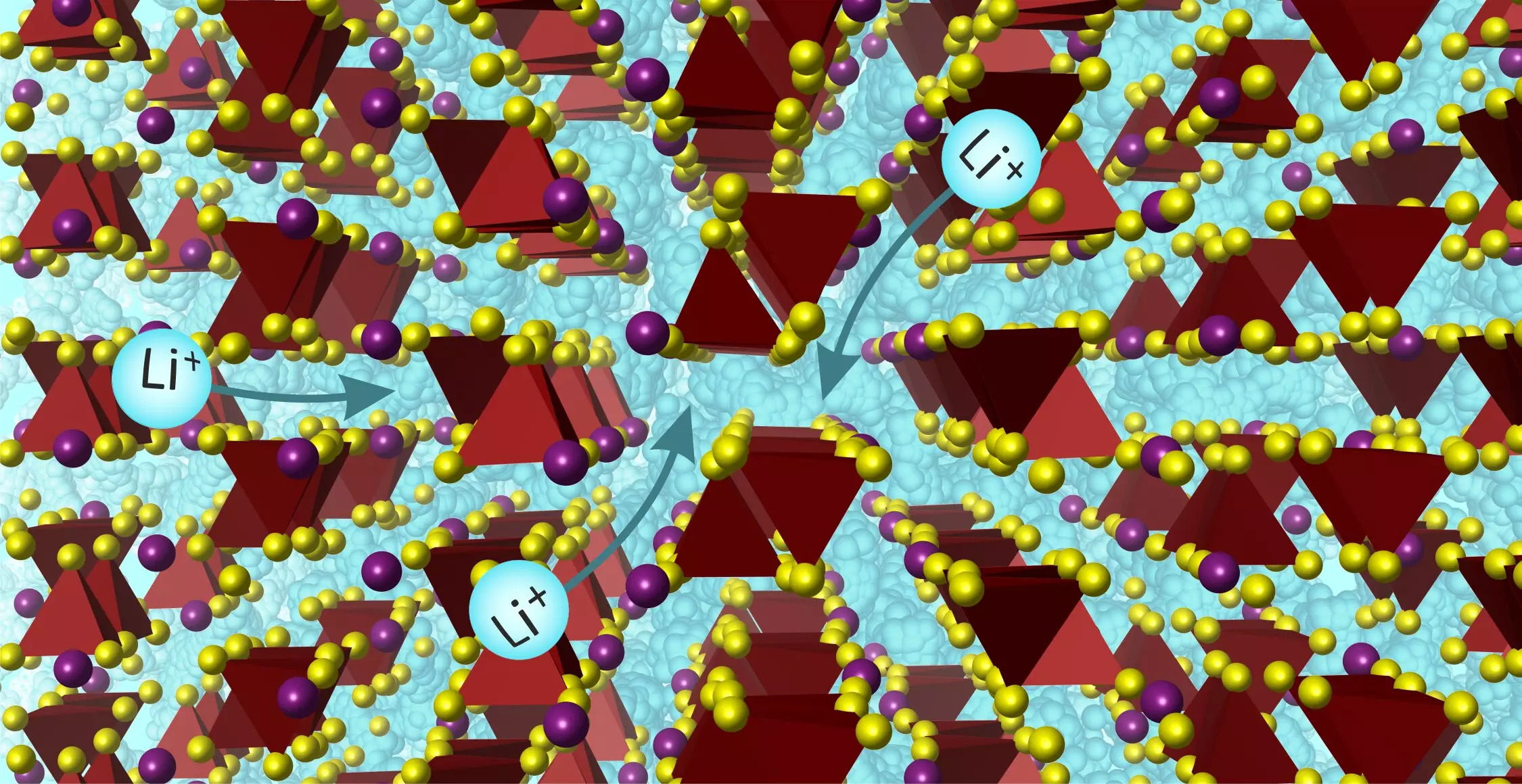The field of materials science is continuously striving to develop innovative materials that align with global priorities, such as achieving Net Zero goals. A recent study conducted by researchers at the University of Liverpool has made a groundbreaking discovery in the realm of battery technology. They have successfully designed a solid material capable of rapid lithium ion conductivity, which can potentially replace liquid electrolytes in lithium ion batteries. This development not only enhances the safety of battery technology but also improves energy capacity.
The use of lithium electrolytes is crucial for the operation of rechargeable batteries found in electric vehicles and various electronic devices. Traditionally, these electrolytes have been in liquid form, making them susceptible to leakage and posing safety risks. The researchers at the University of Liverpool aimed to develop a material that could offer high lithium ion conductivity while eliminating the need for liquid electrolytes.
A Transformative Scientific Approach
To achieve their goal, the interdisciplinary research team from the University of Liverpool employed a novel scientific approach. They first synthesized the new solid material in their laboratory and then proceeded to determine its structure, which refers to the arrangement of atoms in space. This experimental groundwork allowed them to comprehend the functioning of the material in a battery cell.
The researchers at the University of Liverpool conducted a collaborative investigation that combined the expertise of various scientific disciplines. The team utilized both artificial intelligence (AI) tools and physics-based calculations to guide their decision-making process. Chemistry experts made use of AI-generated data to identify potential materials and assess their viability. This unique approach illustrates how human expertise combined with AI can revolutionize the field of materials discovery.
A Paradigm Shift in Solid State Electrolytes
The discovery of this new material challenges prior knowledge and understanding of high-performance solid-state electrolytes. Unlike previous assumptions that only a limited number of solids could offer suitable ionic environments for conductivity, the newly designed material exhibits multiple coordination environments for lithium ions. This remarkable find expands the realm of chemical possibilities and opens doors for further discoveries in materials with superior properties. The research conducted at the University of Liverpool has paved the way for future optimization of material chemistry, enabling the development of even more efficient and high-performance materials.
Advantages over AI-Driven Discoveries
While AI tools have gained attention for their potential to aid in materials discovery, the University of Liverpool’s research shows the importance of expert guidance. Autonomous AI systems often replicate what they have been trained on, resulting in the introduction of materials that closely resemble existing ones. The collaborative approach employed by the research team allowed for meaningful differences in composition and structure, ensuring the creation of a truly unique and functional material. This breakthrough highlights the significance of expert-driven decision-making in complex scientific endeavors.
A New Route for Discovery
The disruptive design approach utilized by the University of Liverpool holds immense promise for the discovery of high-performance materials. By combining the precise usage of AI tools with human expertise, researchers can explore uncharted territories in materials science. Leveraging this methodology, the scientific community can unlock new possibilities in ion motion within solids, leading to the development of safer and more efficient batteries.
The study conducted at the University of Liverpool involved the collaborative efforts of researchers from multiple departments and research centers within the institution. The Department of Chemistry, Materials Innovation Factory, Leverhulme Research Center for Functional Materials Design, Stephenson Institute for Renewable Energy, Albert Crewe Center, and School of Engineering all contributed to the successful realization of this research.
The University of Liverpool’s research breakthrough in materials science brings us one step closer to safer and more efficient lithium ion batteries. By designing a solid material with exceptional lithium ion conductivity, these researchers have paved the way for the replacement of liquid electrolytes in battery technology. The combination of expert-driven decision-making and AI tools showcases the effectiveness of a collaborative approach in materials discovery. This study also challenges prior assumptions about solid-state electrolytes, opening new avenues for further research and innovation. This breakthrough heralds a new era in the quest for high-performance materials and reinforces the importance of multidisciplinary collaboration in scientific endeavors.


Leave a Reply